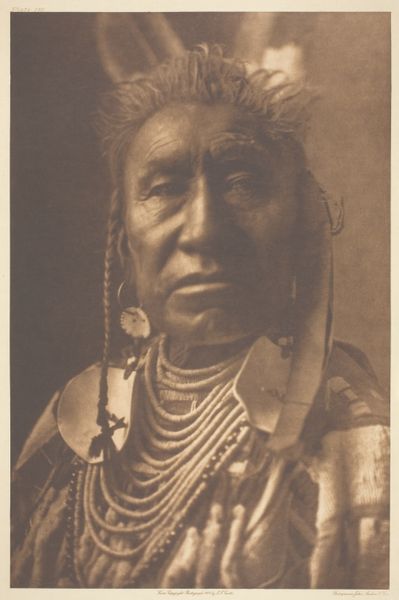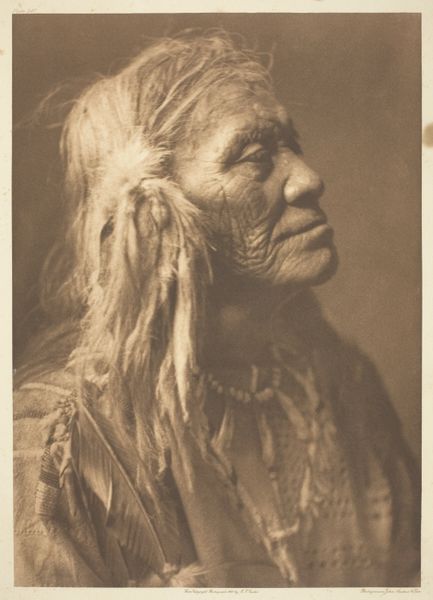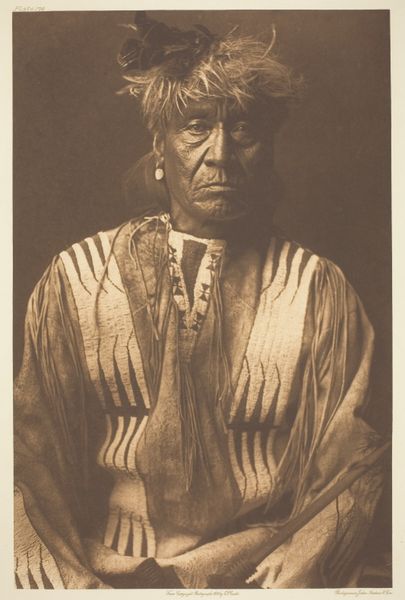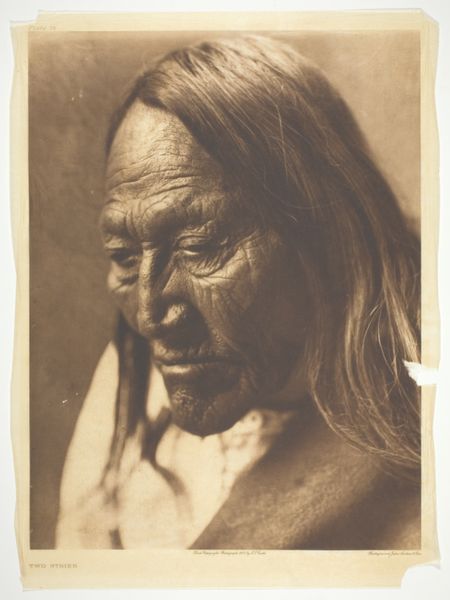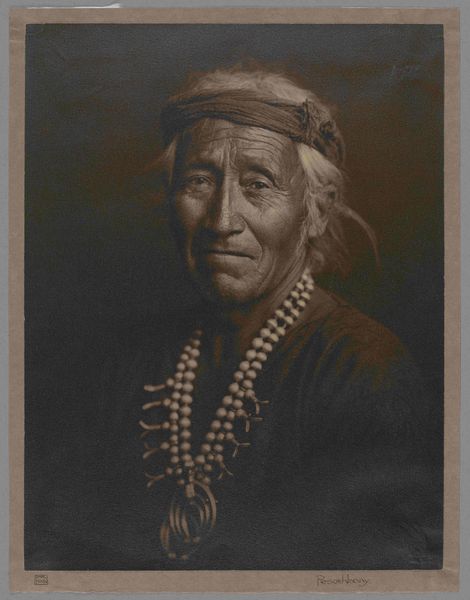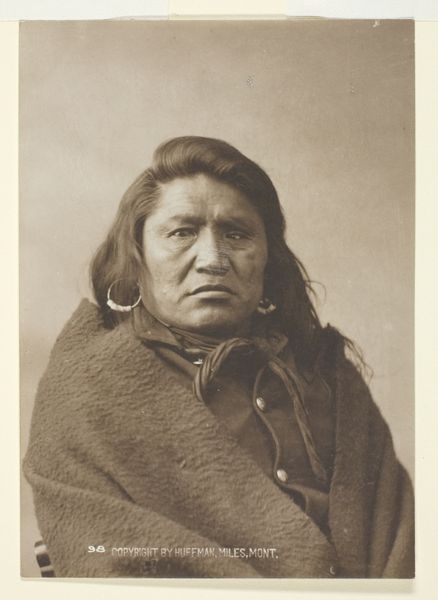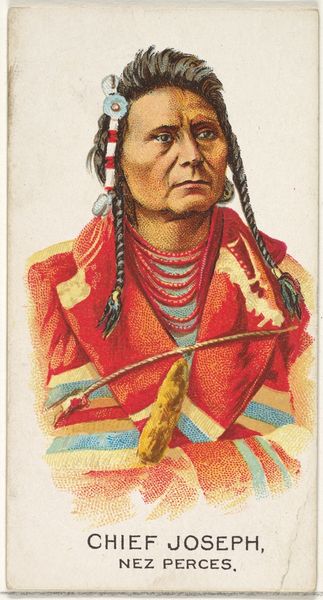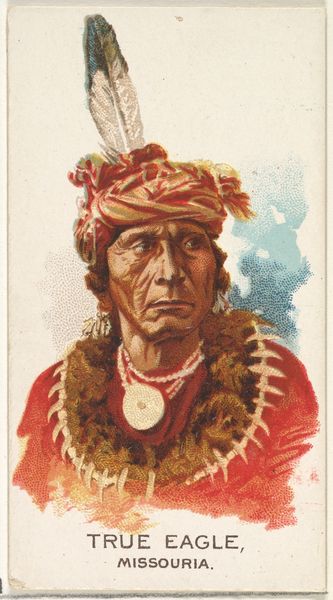
photography, gelatin-silver-print
#
portrait
#
photography
#
gelatin-silver-print
#
indigenous-americas
Dimensions: 40.1 × 29.9 cm (image/paper); 55.8 × 45 cm (mount)
Copyright: Public Domain
Curator: Edward Curtis captured this striking gelatin-silver print in 1908, titled "Wolf - Apsaroke." What strikes you first about it? Editor: It’s the directness of his gaze, certainly, the incredible detail rendered in the texture of his skin and clothing. There’s also a melancholy to the tones, which is enhanced by the contrast between his decorative garb and solemn expression. Curator: That melancholic tone is precisely what makes Curtis' work so fraught. He presents a romantic vision of Indigenous peoples, often obscuring the brutal realities of colonization. We need to interrogate his process: manipulating the subjects’ clothing and settings, constructing a narrative of a "vanishing race," silencing their own stories. Editor: Absolutely. But thinking about the print itself, gelatin-silver enabled such tonal range, didn't it? Curtis understood how to coax detail from shadow and light. Look at how the white beads stand out, how his ornamented pipe acts like another focal point, directing our eyes to his weathered hands. Curator: The materiality definitely heightens the intended message, as does the cultural context. Curtis worked during a period when Native American culture was under intense pressure to assimilate, and these portraits often reinforced existing stereotypes. Editor: Do you think, even through the lens of historical objectification, there remains something valuable in the craft itself? Beyond the subject of representation? Curator: It's a complicated balancing act. Appreciating the technical skill is one thing; failing to critically examine the motivations and broader impact is another. Curtis sought to define and essentially ossify Native American identity through his artistic project, and those actions hold weight and consequence for future generations. We must remember that. Editor: And perhaps we can see Curtis’ portraits themselves as historical artifacts. Flawed and biased yes, but through them, we might confront the ongoing struggle between historical preservation and cultural sovereignty. Curator: Exactly. Viewing these images now asks that we actively deconstruct layers of representation, power, and erasure. A continual act of accountability.
Comments
No comments
Be the first to comment and join the conversation on the ultimate creative platform.
